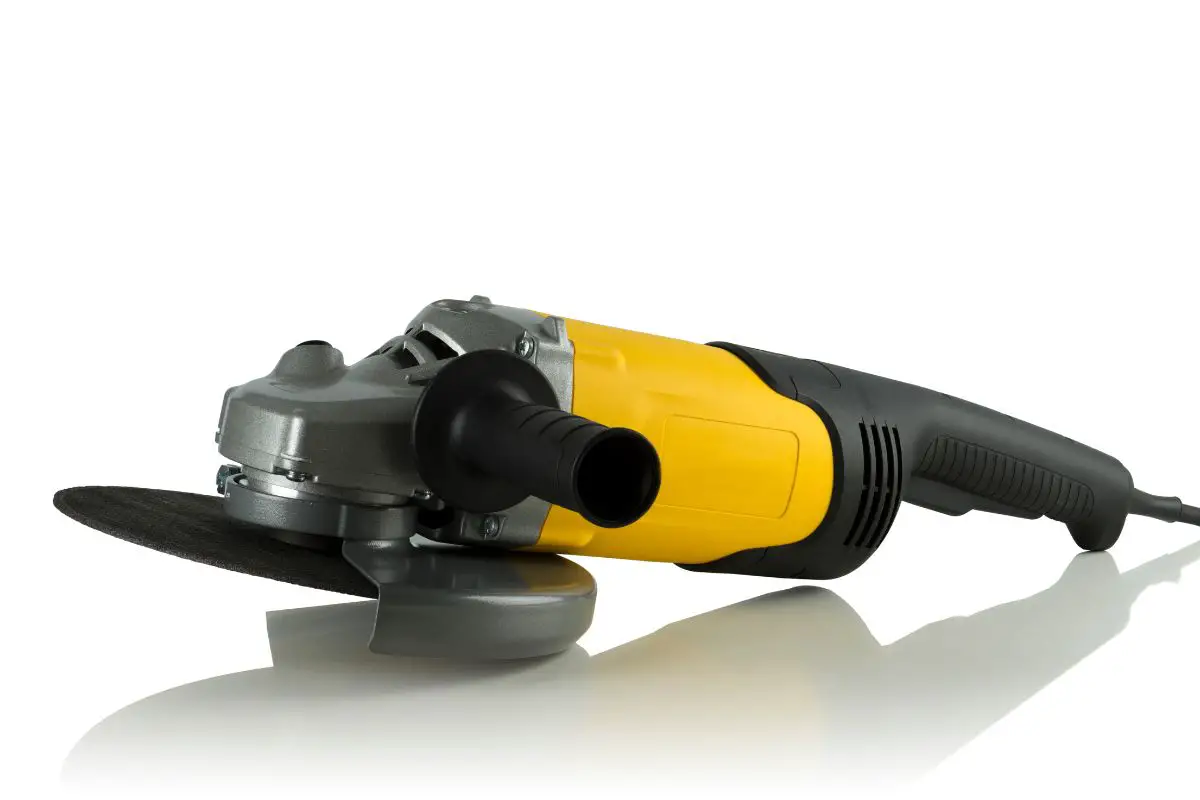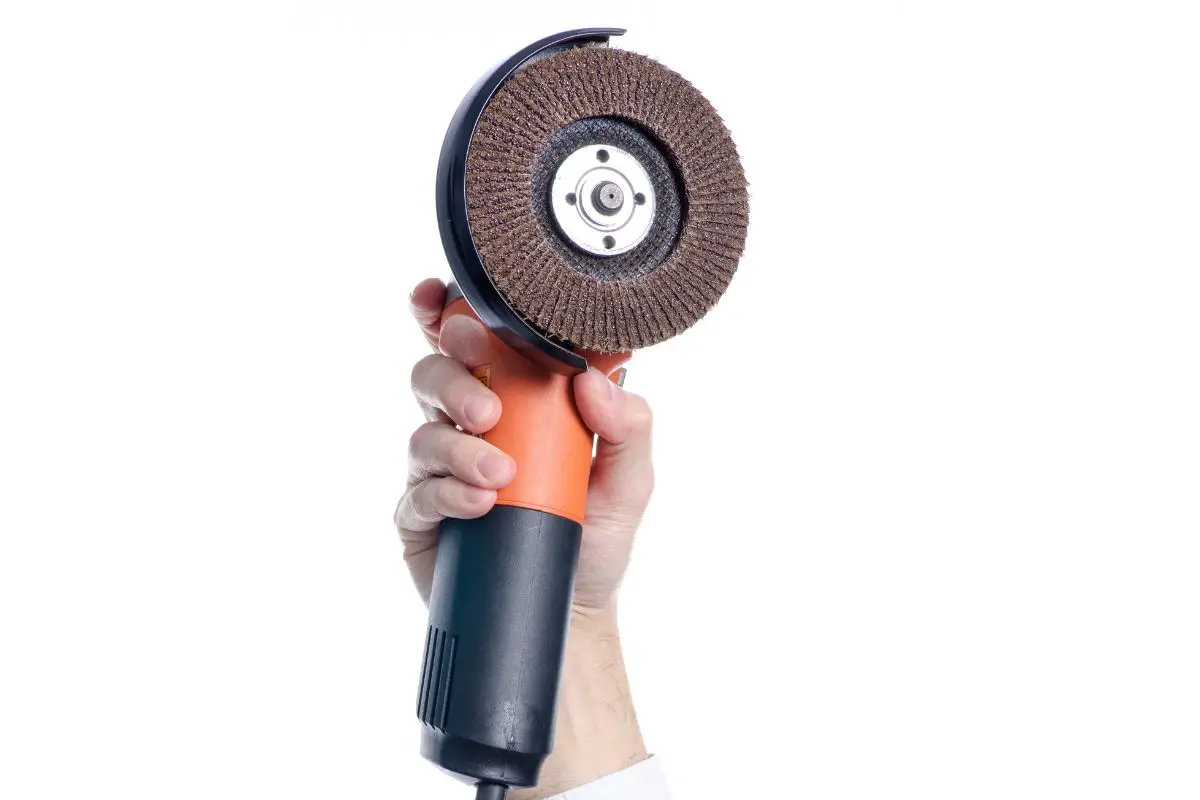No matter the material, working with an angle grinder is always messy, but some materials pose more of a problem.
Even though you should always wear respiratory and ocular protection whilst cutting, the swarf and dust of metal and wood settles relatively quickly, but the silica dust kicked up when cutting masonry hangs in the air, posing a major health hazard.
This is why wet saws are such amazing bits of kit. A controlled stream of water saturates the masonry and saw as it spins, reducing airborne particles as well as keeping the saw cool, thus improving performance.
You can also use water with regular angle grinders or even invest in conversion kits, but before you break out the H2O on your next project, there are a few things you ought to know.
Electricity & Water Don’t Mix

Water is a highly conductive substance, and angle grinders are of course powered by electricity, which means there’s scope for some pretty horrifying accidents to occur if you’re not careful when making your cut.
To reduce the possibility of electric shock, we highly recommend only using cordless angle grinders with water, such as this DeWalt saw.
The presence of a cord and the proximity of an outlet means traditional angel grinders pose much more of a risk when water’s around.
If You Must Use A Corded Tool
If your only option is to use a corded angle grinder and forgoing the water is not an option, then it’s critical that you use a GFCI outlet or extension cord.
GFCI equipment is essentially kitted out with advanced circuit breaker protection that will cut power when it detects moisture or excess voltage, making it by far the safest option for using an angle grinder with water.
You’ll often find this sort of fitting in kitchens where there’ll typically be a lot of electricity and water in close proximity. Bring one of these bits of gear into the equation, and you make your entire project a lot more health and safety conscious.
Never Forgo Ocular And Respiratory Protection
The best thing about using water with an angle grinder is that it significantly reduces dust clouding, but it won’t completely wrangle every single particle, especially when you’re working on masonry.
In light of this, even if you’re saturating your blade and materials, you still absolutely 100% need to be wearing all your protective facial equipment.
For the uninitiated, silica dust is incredibly hazardous. When inhaled, particles become lodged and our lungs are unable to flush them out.
Over time, this causes scarring and inflammation, diminishing our capacity to take oxygen, a condition known as silicosis. So, do yourself a favor — wear your protection!
Use A Tarp Or Plastic Sheet
What happens when dirt gets wet? It turns into soggy, claggy mud, that’s what, and when all your dust refuse gets wet, it forms a similar sort of thick, sticky paste.
It can be an absolute nightmare to clean up, so make things easy on yourself, and lay down a tarp of some description before you get started.
This “do” is particularly pertinent if you’re working indoors, as you don’t want the place to look like it just flooded!
Steady Feet
Water and angle grinders work a treat together, but only in a very focused area — the cutting zone.
Try your best not to get too H2O-happy and splash the stuff all over the place, as water will compromise the grip on your footwear and increase the chances of an accident by an extortionate amount.
You don’t need to be told that slipping while using power tools is a big, resounding “DON’T”, which is why you should keep your water application measured and precise. Hold the water fights until after the day’s work is done, folks.
If you’re not going to be able to keep the soles of your feet dry, be sure to wear some solid work boots that provide impeccable traction. Stay on your feet; stay safe!
Keep Your Grinder Housing Dry

The blade of your angle grinder may benefit from a shower, but the motor and internal electrical components will not, so be sure to keep that stream focused and the grinder housing well out of the splash zone.
Pair this tip with the one mentioned earlier about GFCI gear, and your chances of electrocution go way down.
Use The Correct Blade
If you’re thinking about using water with your angle grinder, there’s a good chance you’re planning to do some masonry work, for which you’ll need a particular kind of blade to really see the benefit.
I’d recommend using a rim blade for masonry (especially tile), as they offer the most control, which is something you’ll need in spades when water is involved.
What’s more, they provide a slightly slower cut, meaning the cooling of the water will lengthen blade service life to an even further degree — hooray!
My suggestion on this front is to check out the DeWalt diamond blade. It’s more than capable of dry cutting, but it also excels for wet cuts, meaning you won’t have to fork out for multiple blades.
How To Convert Your Dry Angle Grinder Into A Wet Saw?
If you’re particularly handy, you could no doubt amass some bits and pieces and build your own wet saw conversion kit, but, unless you really know what you’re doing, I’d advise against it.
A much safer (not to mention easier) way of doing things is to simply purchase a pre-assembled conversion kit. They’re affordable and provide a truly high performance conversion.
Find a decent one, and the water stream will always be stationary in relation to the blade and the stream will always be controlled, which means no water getting under your feet and no water splashing your saw enclosure.
Some, like this magnificent conversion kit from the folks over at Alpha, arrive with a garden hose adapter, so you can use your hose and exterior faucet as your water source, which is incredibly handy.
This particular kit can also accommodate a number of different blade types and sizes, so the chances are, no matter what your current or intended setup looks like, this kit will be compatible.
Final Thoughts
Should you use water with your angle grinder? Yes, absolutely, especially if you plan on doing any masonry work, as the silica dust that gets kicked up can be deadly if inhaled. It can also mess your eyes up something fierce.
Having said that, using water does not completely protect you from the dreaded dust storm, so whatever you do, wear your protective equipment.
The dust reducing qualities of water make the job easier and fractionally safer but not safe enough that you’ll come out unscathed with no facial protection.
Furthermore, you’ll have to take into account the hazards listed above before you get started with your first cut. Cordless saws are a much safer option as they keep exposed power sources well out of the way, thereby reducing the chance of electrocution.
You should also try to keep your footing nice and dry to reduce the chance of a slip, and to keep things nice and tidy, I’d highly recommend laying down a tarp before you begin.
Good luck with your wet cutting!
